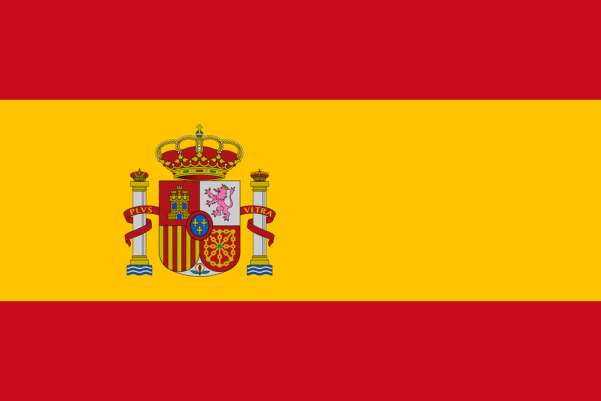Get to know Brazil and discover its secrets
Brazil is a fascinating country, with a wealth of natural beauty and beaches, and the home to several UNESCO World Heritage Sites.
If you’re planning on travelling to Brazil, let Visit Brazil Travel Association (VBRATA) be the first to welcome you! VBRATA is a non-profit organisation based in London that works to unite tour operators and airlines specialised in travel to Brazil. The association is dedicated to promoting the “green and yellow” country and showcasing all of its tourist and cultural attractions. All members have established businesses in Europe and are recognised in the UK for their professionalism and reputation. To find out more visit the website.
Below are some hints about what you’ll find travelling around Brazil.

Flying Down to Rio
If you’ve heard of any city in Brazil or South America, it’s probably Rio de Janeiro. This city of unrivalled beauty was once the country’s capital and has been a global icon ever since Fred Astaire and Ginger Rogers starred in the film “Flying Down to Rio” in 1933. It’s a fun, glamorous, and certainly sexy city. Known as the “Cidade Maravilhosa” (Wonderful City) on account of its world-famous attractions such as the Christ the Redeemer statue at the top of the Corcovado mountain; the Sugar Loaf mountain; the Copacabana and Ipanema beaches; and the Maracanã, a stadium built for the 1950 FIFA World Cup, which also staged the 2014 FIFA World Cup final, and the opening and closing ceremonies of the Olympic Games Rio 2016.
But Brazil hides many other treasures just waiting to be discovered!
Hidden Treasures
Brazil is divided into five geographic regions: The Southeast, The South, The Midwest, The North and the Northeast.

Top view of the center of the historic city of Ouro Preto in Minas Gerais, Brazil, with its famous churches and old buildings with hills in the background.
The Southeast, which accounts for almost half of the country’s population, is home to the historical cities of Minas Gerais, one of the biggest colonial legacies in Brazil’s story. At last count, Brazil had no less than 18 UNESCO World Heritage Sites, three being in Minas Gerais: the cities of Ouro Preto, Diamantina, and the Santuário de Bom Jesus, in Congonhas.
The South was colonised by countless European immigrants who flourished here over the centuries, helping to establish the cities of Porto Alegre, Florianópolis and Curitiba. The region is responsible for the production of excellent wines and exceptional meats.
One of the most marvellous natural wonders of the world can be found in the south of the country, the Iguaçu Falls! Five times larger than its North American cousin, Niagara Falls, with 275 individual falls spanning nearly 3km of the River Iguaçu on the border with Argentina. The main fall is the biggest in the world in terms of volume of water per second and the Iguaçu National Park is also a UNESCO World Heritage Site.
In the Midwest, you’ll find Brasilia, the capital of Brazil planned and constructed in the shape of an aeroplane by renowned architect Oscar Niemeyer (author of the HQ Project of ONU in Washington), and the Pantanal, the wild west of Brazil, home to one of the largest plant and fauna reserves known to man.
The North is dominated by the Amazon rainforest, 60% of which is on Brazilian territory. The Amazon rainforest is responsible for the generation of more than half the planet’s source of oxygen, while the River Amazon, which flows for more than 6,760km, empties enough water into the Atlantic Ocean each day to satisfy all the water needs in the UK for the two years!

And finally, the Northeast, known for its stunning coast, its perfect all-year-round climate, and its cultural traditions. And for this reason, it is the preferred location amongst many Brazilians as a holiday destination. UNESCO has named a number of Word Heritage Sites in the region including the historical centres of Salvador, Olinda, São Luis and São Cristóvão, as well as the Serra da Capivara National Park, the Mata Atlântica and the ecological islands of Fernando de Noronha, very popular for diving.
In summary, Brazil is a treasure chest of experiences, attractions and places waiting to be explored by the most discerning of travellers. Therefore, it is about time you got to know it!
How to get to Brazil
Brazil is well-connected in terms of air travel from Europe, North America and its South American neighbours. There are also a growing number of flights and connections from all over Africa and the Gulf of Mexico.
From the UK the companies that offer direct flights to Brazil are British Airways and TAM Airlines. Air Europa and TAP have non-stop flights from Europe; TAP flying to more destinations throughout Brazil than any other airline.
The main international gateways and hubs for domestic travel are the international airports of São Paulo (Guarulhos – GRU) and Rio de Janeiro (Galeão – GIG). Other Brazilian cities with direct flights from Europe include Belo Horizonte (CNF), Brasília (BSB), Fortaleza (FOR), Natal (NAT), Recife (REC) and Salvador (SSA).
Like most international airports, those in Brazil have separate queues for national passport holders and for foreign visitors. Holders of European passports do not need a visa to enter Brazil.
Make sure you take a look at London travel agencies who are BBMag’s partners, in the BBMag Business Directory, here.
For more information about Brazil, travelling to Brazil, Holidays in Brazil and Brazilian tourism please also visit VBRATA Visit Brazil Travel Association.

















